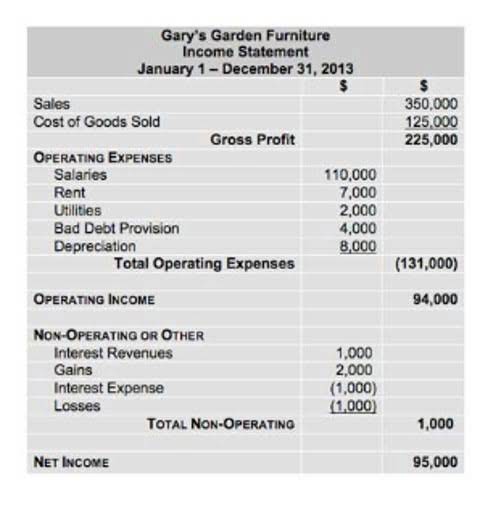
You can generate leads for your business by creating email campaigns and view performance with detailed analytics on open rates and click-through rates (CTR). You get more cashback in tax benefits from the beginning, which can help balance the expense of purchasing a resource. In the case that you’ve applied for a line of credit or a loan, you could be paying off a bigger part of the loan in the earlier periods, consequently, decreasing the sum for every period you pay interest on. Next year when you do your calculations, the book value of the ice cream truck will be $18,000. The total expense over the life of the asset will be the same under both approaches.

Yes, there are also some disadvantages that you should consider about this formula. The first one is obvious, as you need to make calculations and apply a mathematical method. As basic as it is, it requires a dedication that is not so important in the straight-line method. If we apply it to life as an example, we can say that it is the loss of value due to a product or asset’s use or the passage of time.
Double Declining Balance Method Formula (DDB)
While double declining balance has its money-up-front appeal, that means your tax bill goes up in the future. Let’s examine the steps that need to be taken to calculate this form of accelerated depreciation. By dividing the $4 million depreciation expense by the purchase cost, the implied depreciation rate is 18.0% per year. It would consist of multiplying two times the basic depreciation rate by the book value.
The depreciation expense recorded under the double declining method is calculated by multiplying the accelerated rate, 36.0% by the beginning PP&E balance in each period. Of course, the pace at which the depreciation expense is recognized under accelerated depreciation methods declines https://www.bookstime.com/ over time. In the double-declining method, depreciation expenses are larger in the early years of an asset’s life and smaller in the latter portion of the asset’s life. Companies prefer to use the double-declining method for assets expected to become obsolete more quickly.
What is depreciation?
When changing depreciation methods, companies should carefully justify the change and adhere to accounting standards and tax regulations. Additionally, any changes must be disclosed in the financial statements to maintain transparency and comparability. While most companies would look to avoid using the double declining balance method for depreciating their assets, some may still go with it. The reason for not using it is that the method results in a lower net income in the early years of the asset’s life. The key to calculating the double declining balance method is to start with the beginning book value– rather than the depreciable base like straight-line depreciation. The beginning book value is multiplied by the doubled rate that was calculated above.
- Under straight line depreciation, XYZ Company would recognize $3,000 in depreciation expense each year.
- This method can be placed between the straight-line method and the double declining balance method, in terms of speed of depreciation.
- Most resources decrease in value over the long haul and may require a significant measure of support expenses to keep resources in reasonable use in later years.
- In simple terms, Book value is the cost you paid while purchasing the asset.
- That translates into higher depreciation expense at the beginning and much lower at the end.
- We will have to explain previous concepts such as depreciation and double-declining balance.
However, the 20% is multiplied times the fixture’s book value at the beginning of the year instead of the fixture’s original cost. Double declining balance depreciation allows for higher depreciation expenses in early years and lower expenses as an asset nears the end of its life. Various software tools and online calculators can simplify the process of calculating DDB depreciation. These tools can automatically compute depreciation expenses, adjust double declining balance method rates, and maintain depreciation schedules, making them invaluable for businesses managing multiple depreciating assets. Double Declining Balance (DDB) depreciation is a method of accelerated depreciation that allows for greater depreciation expenses in the initial years of an asset’s life. Here’s the depreciation schedule for calculating the double-declining depreciation expense and the asset’s net book value for each accounting period.
Partial Year Depreciation
Although it is a complicated term, double declining balance depreciation is considered a good idea for pre-saving on possible business expenses. Let’s get a better understanding of what it is and how we can apply this formula to improve finances. An asset’s estimated useful life is a key factor in determining its depreciation schedule.
- The content on this website is provided “as is;” no representations are made that the content is error-free.
- Accumulated depreciation is the sum of all previous years’ depreciation expenses taken over the life of an asset.
- All physical assets run across decreasing their value over a period of time due to continuous use, deterioration, or obsolescence.
- One method is called partial year depreciation, where depreciation is calculated exactly at when assets start service.
- Under Straight Line Depreciation, we first subtracted the salvage value before figuring depreciation.
- But, to get a head start, we can say that using the double-declining balance formula is how you can reduce the depreciation process of an asset’s value over time.
- Under a 40% DDB depreciation rate, the book value of the same asset two years later would only be $40,320.
For example, companies may use DDB for their fleet of vehicles or for high-tech manufacturing equipment, reflecting the rapid loss of value in these assets. For instance, if an asset’s market value declines faster than anticipated, a more aggressive depreciation rate might be justified. Conversely, if the asset maintains its value better than expected, a switch to the straight-line method could be more appropriate in later years. Accruing tax liabilities in accounting involves recognizing and recording taxes that a company owes but has not yet paid. Generally speaking, DDB depreciation rates can be 150%, 200%, or 250% of straight-line depreciation.
Owing to an increased rate of depreciation, it is termed accelerated depreciation. This method can be placed between the straight-line method and the double declining balance method, in terms of speed of depreciation. In this method, the yearly depreciation is separated into various fractions based on the number of years in the useful life. Accelerated depreciation techniques charge a higher amount of depreciation in the earlier years of an asset’s life. One way of accelerating the depreciation expense is the double decline depreciation method.
By accelerating the depreciation and incurring a larger expense in earlier years and a smaller expense in later years, net income is deferred to later years, and taxes are pushed out. However, the management teams of public companies tend to be short-term oriented due to the requirement to report quarterly earnings (10-Q) and uphold their company’s share price. In addition, capital expenditures (Capex) consist of not only the new purchase of equipment but also the maintenance of the equipment. That would give us the straight-line depreciation rate, which, in this case, would be 0.1 or 10%.
Why Use the Double Declining Balance Method?
All the information in this blog is sourced from official or contrasted sources from reliable sites. In fact, it is common for this to be applied through the external services of accounting professionals. For example, let’s say that a company buys a delivery truck for $50,000 that is expected to last ten years and will have a salvage value of $5,000. Deskera is an all-in-one software that can overall help with your business to bring in more leads, manage customers and generate more revenue.
